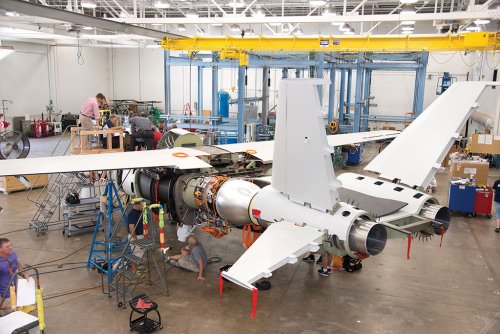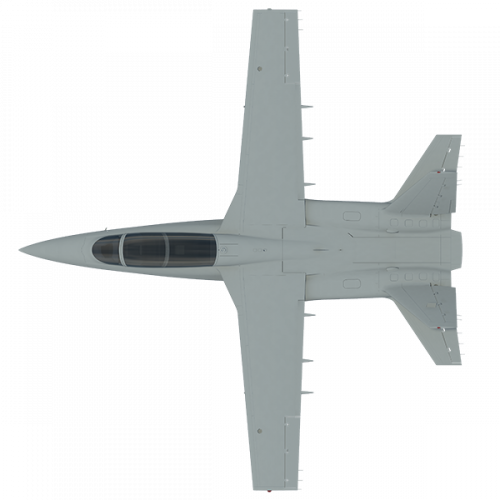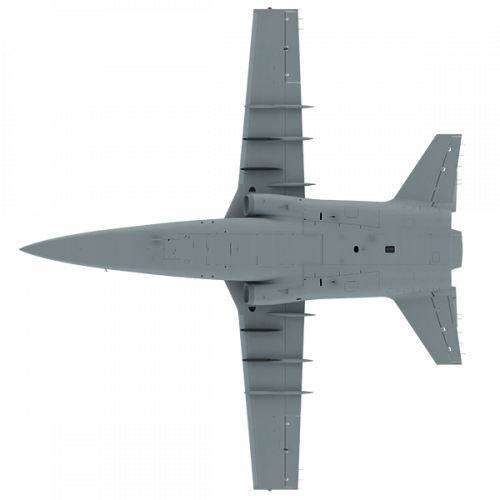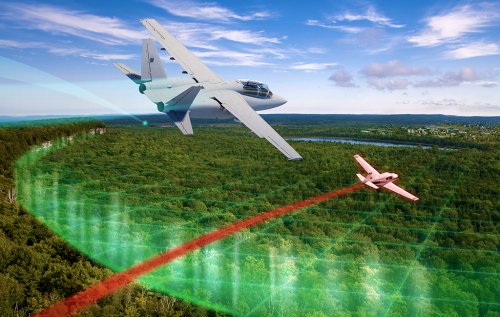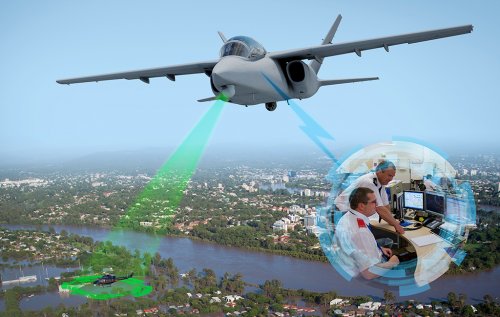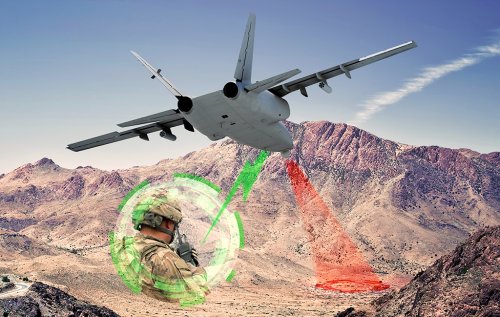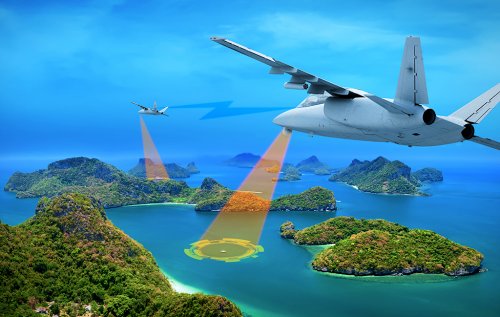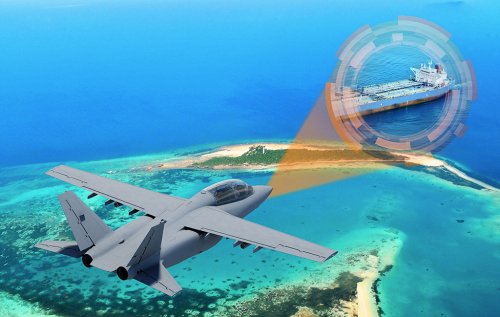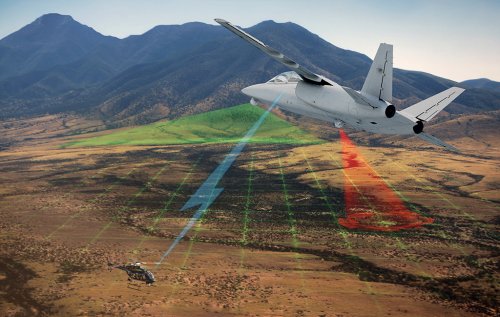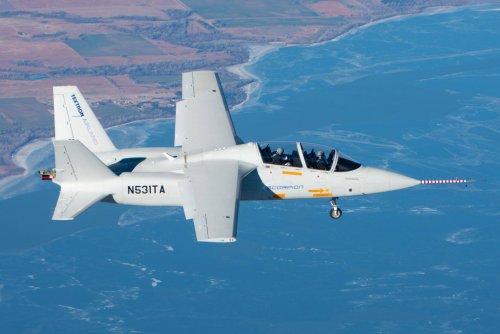Somewhere in the deeper recesses of the US Air Force museum is one of two surviving Piper PA-48 Enforcer close air support aircraft. It looks a lot like a P-51D Mustang, from which it was derived, but was almost entirely new in detail. Its origins lay in the Cavalier Aircraft company, which had spent the 1960s remanufacturing P-51s for enthusiasts and smaller air forces and had gradually evolved a turbine-powered aircraft, which was eventually adopted by Piper.
The USAF's interest in the Enforcer could not be measured by the most sensitive instruments known to science, but friendly Congressmen managed to stuff the concept down the service's throat, at least as far as an evaluation program. That was farther than any of the many subsequent attempts to design a light combat aircraft got. (These included the Scaled Composites Ares and the Fairchild Republic AT-46, the latter being based on what was probably one of the lamest aircraft ever to make it to Edwards.)
The Textron Scorpion is not, conceptually, very different from these. The basic idea is to sacrifice fighter-type air-to-air performance, and a heavy weapon load, in order to reduce acquisition and operating cost. However, "mudfighter" concepts have also appealed to military commentators and thinkers who suspect that the USAF and other air services don't pay enough attention to close air support: in their view, the fact that a low-performance aircraft can't be used for air combat or deep strike is an advantage in itself.
So far, those arguments have resulted in exactly two successful programs in the past 70 years (the A-10 and the Su-25). The Scorpion does not introduce any radical new technologies, so the question is whether the environment has changed enough give the new aircraft a chance of success.
The biggest environmental change has been the number of air combat operations flown in permissive airspace, where the threat is limited to small arms and manportable air defense systems. Scorpion should be effective in that environment - particularly with the help of modern sensors and communications systems, and small precision weapons, which allow an effective overwatch mission to stay out of the range of the "golden BB". The jet is also big enough to mount a directed infrared countermeasures system for MANPADS defense, as laser DIRCM systems themselves are getting smaller.
With a design optimized for endurance, and with the availability of lightweight, high-performance radars, processors and displays, Scorpion is being pushed for maritime and border surveillance -- the kind of mission where modified light commercial aircraft are widely used today -- and even for low-speed air interdiction, a mission that Textron Cessna's Citation 550s already perform for US Customs & Border Protection.
The question is whether Scorpion's backers can persuade customers to carve out a mission space large enough to justify adding a new type to their fleets. The aircraft does not have any direct competitors -- but its missions overlap in some areas with other aircraft. A King Air or the new Piaggio-ADASI multi-role ISR aircraft can perform maritime or border missions, carrying a crew of sensor operators and mission managers. With a loaded weight of 21,250 pounds, the Scorpion is not tiny -- it's the size of an A-1 Skyraider or A-4 Skyhawk -- and while today's least costly fighter, the JAS 39 Gripen, is about 50 percent bigger, it has far greater performance, except in endurance. On the lower end, Textron has to convince people looking at light combat aircraft that they need something around twice the size of a Super Tucano or AT-6.
Regardless of the design's merits, Textron had better be prepared to commit some serious time and money to this project if it is to find an economically realistic market.

